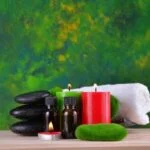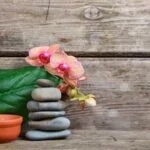Are you interested in learning how to make oils for aromatherapy at home? Aromatherapy involves the use of essential oils to promote physical and mental well-being.
In this article, we will explore the art of creating your own aromatherapy oils, understanding their benefits, essential tools and ingredients needed, different extraction methods, step-by-step guide on making oils at home, tips for choosing carrier oils, popular essential oil combinations, safety precautions and storage tips, as well as creative ways to use aromatherapy oils for relaxation, stress relief, and healing.
Aromatherapy has been used for centuries as a natural way to support overall health and wellness. Aromatherapy oils are concentrated plant extracts that can be used for their therapeutic properties through various methods such as inhalation, topical application, or through diffusion. They can help alleviate stress and anxiety, improve sleep quality, boost mood, relieve pain and inflammation, enhance cognitive function, and support overall emotional balance.
In the following sections of this article we will discuss everything you need to know about making your own aromatherapy oils from the comfort of your own home. This includes understanding the benefits of aromatherapy oils, the essential tools and ingredients needed for making them at home using different methods of extraction such as distillation, cold-pressing and infusion.
Additionally we will also provide insights on selecting carrier oils for blending with essential oils and some popular essential oil combinations for specific purposes.
Understanding the Benefits of Aromatherapy Oils
Aromatherapy oils have been used for centuries to improve physical, emotional, and mental well-being. These oils are extracted from various plants and flowers and are known for their aromatic properties that can promote relaxation, reduce stress, boost mood, and even alleviate certain ailments. Understanding the benefits of aromatherapy oils is crucial in exploring how they can be incorporated into your daily routine for overall wellness.
One of the key benefits of using aromatherapy oils is their ability to positively impact one’s mood and emotions. Certain essential oils have been found to have uplifting or calming effects on the mind, making them useful for managing stress, anxiety, and even symptoms of depression. For example, lavender oil is renowned for its relaxing properties, while citrus oils like lemon or bergamot can help uplift the spirits.
Another significant benefit of aromatherapy oils lies in their potential to promote physical wellness. Many essential oils possess anti-inflammatory, antimicrobial, and analgesic properties which make them beneficial for treating minor aches and pains as well as supporting the body’s immune system. Oils such as peppermint, eucalyptus, and tea tree have been traditionally used to relieve headaches, soothe respiratory issues, and aid in wound healing.
In addition to their emotional and physical benefits, aromatherapy oils can also be utilized for enhancing spiritual well-being. Many cultures believe that certain scents can help create a sense of harmony within oneself or with the environment. Whether used in meditation practices or spiritual rituals, these aromatic oils are believed to facilitate a deeper connection with one’s inner self or higher power.
| Benefit Category | Example Essential Oils |
|---|---|
| Mood Enhancement | Lavender oil – Calming properties; Lemon oil – Uplifting properties |
| Physical Wellness | Peppermint oil – Relieves headaches; Eucalyptus oil – Soothes respiratory issues; Tea tree oil – Aids in wound healing |
| Spiritual Well-being | Frankincense – Promotes deep relaxation; Sandalwood – Facilitates spiritual connection |
Essential Tools and Ingredients Needed for Making Aromatherapy Oils
When it comes to making your own oils for aromatherapy, there are a few essential tools and ingredients that you will need to have on hand. These items are important in the process of extracting and blending the oils, as well as ensuring that your final product is safe and effective for use in aromatherapy.
Tools Needed
The first thing you will need is a quality essential oil distiller. This is an essential tool for extracting the oils from plant materials using steam distillation. Additionally, you will need glass jars or bottles for storing your finished oils, as well as a funnel and dropper for easy dispensing. It’s also important to have a notebook or journal on hand to keep track of your recipes and blends.
Ingredients Needed
The primary ingredient you will need for making aromatherapy oils is, of course, the plant material itself. This can be fresh herbs, flowers, citrus peels, or any other plant material that contains essential oils. You will also need a carrier oil, such as sweet almond oil or jojoba oil, which will dilute the essential oils and make them safe for use on the skin. And lastly, you will need high-quality essential oils for creating blends and combinations.
Safety Equipment
It’s also important to have safety equipment on hand when working with essential oils. This includes gloves and goggles to protect your skin and eyes from direct contact with the concentrated oils. Additionally, having proper ventilation in your workspace is crucial to avoid inhaling too much of the potent aromas during the extraction process.
By having these essential tools and ingredients at your disposal, you can confidently start experimenting with creating your own unique blends of aromatherapy oils at home. Whether it’s for personal use or gifting to friends and family, mastering how to make oils for aromatherapy can be a rewarding and therapeutic experience.
Different Methods of Extracting Oils for Aromatherapy (Eg Distillation, Cold-Press, Infusion)
When it comes to making oils for aromatherapy, there are different methods of extracting oils from plants and herbs. Each method has its own unique qualities and benefits, leading to a variety of aromatherapy oils with different scents and therapeutic properties.
Distillation
One of the most common methods for extracting essential oils is distillation. This process involves using steam to separate the aromatic compounds from the plant material. The steam carries the essential oil molecules out of the plant material, which are then condensed back into liquid form. Distillation is a gentle method that preserves the delicate aroma and therapeutic properties of the oils.
Cold-Press
Cold-press extraction is typically used for citrus fruits and involves pressing the rinds to release the essential oils. The method does not involve heat, which helps to preserve the volatile components of the oils. Cold-pressed essential oils are often vibrant in color and have a fresh, bright aroma.
Infusion
Infusion is another method for extracting aromatic compounds from plants using a carrier oil such as olive or jojoba oil. This process involves placing plant materials in an oil bath and allowing them to infuse over time, transferring their scents and therapeutic properties to the carrier oil.
Understanding these different extraction methods can help you choose which approach would be best suited for your needs when making your own aromatherapy oils at home. Whether you prefer fragrant floral essences or zesty citrus blends, each method offers unique ways to capture nature’s therapeutic gifts in a bottle.
Step-by-Step Guide on How to Make Oils for Aromatherapy at Home
Aromatherapy oils are natural, aromatic compounds that can be used for a variety of therapeutic purposes. These oils are commonly used in aromatherapy practices to promote relaxation, stress relief, and healing. Making oils for aromatherapy at home can be a rewarding and cost-effective way to create customized blends that cater to your specific needs. In this section, we will provide you with a step-by-step guide on how to make oils for aromatherapy at home.
First and foremost, it is essential to gather the necessary tools and ingredients before attempting to make aromatherapy oils at home. Some of the essential tools required include a glass container with a tight-fitting lid, carrier oil (such as almond oil or jojoba oil), and the desired essential oils.
The quality of the essential oils plays a crucial role in the effectiveness of your aromatherapy blend, so it is important to invest in high-quality, pure essential oils from reputable sources.
The first step in making aromatherapy oils at home involves choosing the method of extraction. There are various methods of extracting oils for aromatherapy, such as distillation, cold-pressing, and infusion. Each method has its own advantages and produces different qualities of essential oils.
For example, distillation is commonly used for extracting essential oils from flowers and herbs, while cold-pressing is ideal for obtaining citrus essential oils. Once you have selected your preferred method of extraction based on the type of plant material you are working with, you can proceed with the extraction process.
| Tools | Ingredients |
|---|---|
| Glass container with tight-fitting lid | Carrier oil (e.g. almond oil or jojoba oil) |
| Essential Oils | High-quality plant materials (e.g. flowers, herbs) |
Tips for Choosing the Right Carrier Oils for Aromatherapy Blends
When making oils for aromatherapy, choosing the right carrier oil is essential to create a balanced and effective blend. Carrier oils are used to dilute essential oils before applying them to the skin or using them in aromatherapy diffusers. Here are some tips for choosing the right carrier oils for aromatherapy blends:
1. Consider Skin Type: Different carrier oils have different properties that make them suitable for specific skin types. For example, jojoba oil is great for all skin types, including oily and acne-prone skin, while sweet almond oil is gentle and nourishing, making it suitable for dry or sensitive skin.
2. Absorption Rate: Some carrier oils absorb into the skin quickly, while others take longer to absorb. If you prefer a lighter oil that absorbs quickly, choose oils like grapeseed or apricot kernel. For a more nourishing and long-lasting moisture, opt for oils such as avocado or coconut.
3. Therapeutic Benefits: Carrier oils also offer their own therapeutic benefits, so consider what additional properties you want in your aromatherapy blend. For example, rosehip seed oil is known for its anti-aging properties, while hemp seed oil is famous for its anti-inflammatory benefits.
4. Scent Compatibility: While carrier oils don’t have as strong of a scent as essential oils, they do have a subtle aroma that can affect the overall fragrance of your blend. Make sure to choose a carrier oil with a scent that complements and enhances the essential oils you plan to use.
By considering these factors when choosing carrier oils for aromatherapy blends, you can create personalized and effective oil combinations that cater specifically to your needs and preferences. Always remember to research each carrier oil’s individual properties before incorporating them into your homemade aromatherapy blends.
Popular Essential Oil Combinations for Aromatherapy
Aromatherapy is a practice that involves using natural plant extracts to promote health and well-being. The essential oils used in aromatherapy can be blended together to create delightful and impactful scents. There are countless combinations of essential oils that can be used in aromatherapy, each with its own unique benefits and effects.
One popular combination for aromatherapy is lavender and chamomile. Lavender is known for its calming and relaxing properties, while chamomile has a soothing and comforting effect. When combined, these two essential oils create a powerful blend that can help ease stress, anxiety, and insomnia. Another popular combination is peppermint and eucalyptus, which can help alleviate respiratory issues and provide a refreshing boost of energy.
For those looking to create a more uplifting atmosphere, citrus essential oils such as lemon, orange, and grapefruit are often combined to create a bright and invigorating scent. These citrus blends are great for enhancing mood, increasing focus, and promoting feelings of happiness.
When making your own essential oil combinations for aromatherapy, it’s important to consider the properties of each oil and how they will complement each other. It’s also crucial to use high-quality oils from reputable sources to ensure safety and effectiveness in your blends. Experimenting with different combinations will allow you to find the perfect scents for your specific needs.
By understanding how to make oils for aromatherapy and experimenting with different essential oil combinations, you can customize your own blends to suit your preferences and needs. Whether you’re seeking relaxation, stress relief, or an energy boost, there are endless possibilities for creating personalized aromatherapy experiences at home.
Safety Precautions and Storage Tips for Homemade Aromatherapy Oils
When making homemade aromatherapy oils, it is important to prioritize safety and understand the proper storage methods to maintain the quality of the oils. One of the most vital safety precautions is to always use high-quality, pure essential oils and carrier oils to avoid any adverse reactions or skin irritations. Additionally, it is crucial to keep essential oils out of reach of children and pets, as they can be toxic if ingested.
Proper storage is key to preserving the potency and effectiveness of aromatherapy oils. Essential oils should be stored in dark glass bottles to protect them from light and heat, which can cause the oils to degrade. It is also important to keep them in a cool, dark place, away from direct sunlight or fluctuating temperatures. When stored correctly, essential oils can maintain their therapeutic properties for an extended period.
Furthermore, it is essential to label all homemade aromatherapy oils with the date they were made and the ingredients used. This ensures that you can easily track their shelf life and prevent any confusion in the future.
If there are specific safety warnings or dilution recommendations for certain essential oils, be sure to include this information on the label as well. By following these safety precautions and storage tips, you can enjoy using your homemade aromatherapy oils safely and effectively for a variety of wellness purposes.
Creative Ways to Use Aromatherapy Oils for Relaxation, Stress Relief, and Healing
Aromatherapy oils can be used in a variety of creative ways to promote relaxation, relieve stress, and aid in the healing process. Here are some innovative ways to incorporate these oils into your daily routine:
1. Aromatherapy Diffuser: One of the most popular and effective ways to enjoy the benefits of aromatherapy oils is by using an aromatherapy diffuser. Simply add a few drops of your preferred essential oil or blend to the water in the diffuser and let it disperse throughout the room. This method not only fills the air with delightful scents but also helps to create a peaceful and calming atmosphere.
2. Aromatic Bath: Adding a few drops of essential oil to your bathwater can turn an ordinary bath into a luxurious spa-like experience. Whether you’re looking to unwind after a long day or seeking relief from muscle tension, adding aromatherapy oils to your bath can help soothe both the mind and body.
3. Homemade Aromatherapy Sprays: Create your own aromatherapy spray by mixing essential oils with water in a spray bottle. Use this DIY spray as a natural air freshener, linen spray, or even as a personal fragrance throughout the day. This versatile option allows you to enjoy the benefits of aromatherapy on-the-go.
By exploring these creative uses for aromatherapy oils, you can incorporate their healing properties into various aspects of your daily life, ultimately promoting overall well-being.
Conclusion and Final Thoughts on the Art of Making Aromatherapy Oils at Home
In conclusion, the art of making aromatherapy oils at home can be a rewarding and fulfilling experience. Not only does it allow you to create custom blends tailored to your specific needs and preferences, but it also gives you the satisfaction of knowing exactly what ingredients are going into the oils you use for relaxation, stress relief, and healing purposes.
By understanding the benefits of aromatherapy oils and learning about different methods of extraction, you can harness the power of nature’s essences to promote well-being in your life.
When it comes to making oils for aromatherapy at home, having the essential tools and ingredients is crucial. Whether you choose to use distillation, cold-press, or infusion methods, ensuring that you have high-quality plant material and carrier oils is key to producing effective and potent essential oils. Additionally, being mindful of safety precautions and proper storage techniques will help preserve the integrity of your homemade aromatherapy oils for longer periods.
Overall, with a step-by-step guide on how to make oils for aromatherapy at home and tips on choosing the right carrier oils for blends, anyone can embark on this journey of creating their own natural remedies. The creative ways to use aromatherapy oils for relaxation and stress relief are endless.
Whether through diffusing, topical application, or adding them to bath water or massage oils, incorporating homemade aromatherapy oils into your daily routine can enhance your overall well-being and lead to a greater sense of harmony in mind, body, and spirit.
Frequently Asked Questions
How Do You Make Aromatherapy Oil at Home?
Making aromatherapy oil at home involves choosing a carrier oil, like almond or coconut oil, and then adding essential oils for fragrance. The ratio of carrier oil to essential oil will depend on personal preference and the intended use of the aromatherapy oil.
How Are Aromatherapy Oils Made?
Aromatherapy oils are typically made through a process of steam distillation or cold pressing. For example, lavender essential oil is often made by steaming the lavender flowers to extract the fragrant oils. Other methods may involve solvent extraction or CO2 extraction, depending on the plant material being used.
What Ingredients Do You Need to Make Essential Oils?
To make essential oils at home, you would need plant material such as herbs, flowers, or citrus peels, a carrier oil if you want to create an infused oil rather than a pure essential oil, and the necessary equipment for extraction such as a still for steam distillation or a cold-press machine for certain fruits like oranges or lemons.
The specific ingredients required will depend on the method of extraction chosen and the type of essential oil being made.

Are you looking for a natural way to improve your health and wellbeing?
If so, aromatherapy may be the answer for you.





